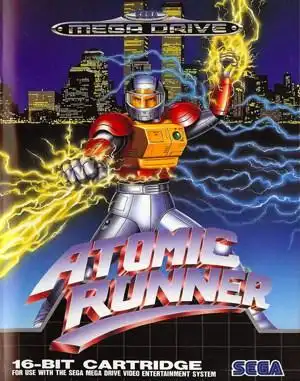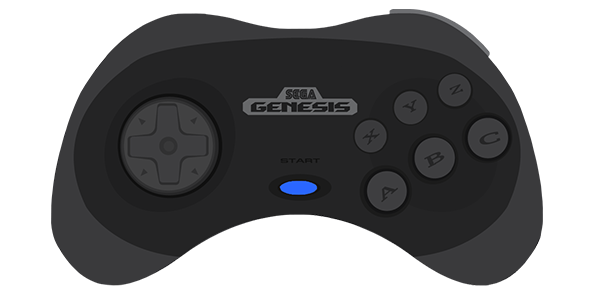Remember those wild, slightly bizarre arcade games from Data East? They had a knack for creating unique experiences, and one title that definitely stands out is Atomic Runner. Whether you knew it as Atomic Runner Chelnov in the arcade or just Atomic Runner on the Sega Genesis/Mega Drive, this side-scrolling shooter platformer offered a frantic, non-stop challenge unlike many others at the time.
It wasn't just the relentless pace that made it memorable; Atomic Runner also carried a surprising bit of controversy and saw significant changes between its arcade and home console versions. Let's take a run through the history and unique charm of this retro gem.
What Exactly is Atomic Runner?
At its core, Atomic Runner is a 1988 arcade game developed by Data East. It's a side-scrolling action title where you play as a character constantly moving forward. Unlike many platformers where you control the screen scrolling, here the screen forces you along at a steady, often increasing, pace. Think of it as a horizontal auto-runner with shooting and jumping, long before that became a popular genre on mobile!
Data East later ported it to several home systems, most notably the Sega Genesis (Mega Drive) and the Sharp X68000. Each port had its own quirks, but the core concept of a non-stop, forward-moving battle remained.
The Run That Never Stops: Gameplay Explained
The defining feature of Atomic Runner gameplay is the forced scrolling. Your character, Chelnov, is always running to the right (or occasionally other directions during bosses). You can move left or right relative to the screen's movement, jump, somersault, and fire your weapon, but you can never just stand still. This constant motion adds a layer of urgency and difficulty, requiring quick reflexes and precise platforming.
You control Chelnov with a joystick (or D-pad) and buttons for jumping and attacking. Power-ups are crucial for survival, enhancing your weapon's power, range, or rate of fire, and sometimes boosting your jump height. The challenge is steep; Chelnov is typically a one-hit wonder, losing any collected power-ups upon taking damage. This makes navigating the chaotic levels filled with enemies and environmental hazards a tense experience. Boss battles are the only time the scrolling pauses, allowing for a more focused, albeit still intense, showdown.
Two Stories, One Runner: The Plot Differences
One of the most interesting aspects of Atomic Runner is how drastically its story changed between the arcade and Genesis versions.
- Arcade Version (Chelnov): The original arcade plot was... well, it was certainly a product of its time. It featured Chelnov, a coal miner who gains superhuman abilities after being exposed to radiation from a nuclear plant explosion. He then fights a secret organization. The game's title and premise drew immediate comparisons to the Chernobyl disaster, leading to some controversy. Data East initially denied the connection, but later some staff acknowledged the influence.
- Genesis Version (Atomic Runner): Perhaps to avoid controversy or simply for a different market, the Genesis port completely rewrote the story. Chelnov became a scientist who inherits a powerful combat suit from his dying father after escaping capture by an evil group called the Deathtarians. His goal? To rescue his kidnapped sister. A much more standard action game premise!
This difference in narrative highlights how games were localized and sometimes fundamentally altered for different audiences and platforms back in the day.
Controversy and Legacy
The perceived connection between Chelnov and the Chernobyl disaster was the main source of controversy surrounding the arcade game. While Data East downplayed it, the name, the coal miner protagonist, and the nuclear accident premise felt too coincidental for many. Interestingly, the game also featured a hammer and sickle symbol in the arcade version, which was removed in the Genesis port.
Despite or perhaps because of its oddities, Atomic Runner holds a place in Data East's history. Chelnov himself made cameo appearances in several other Data East titles, including Trio The Punch, Tumblepop, Bad Dudes Vs. DragonNinja, and even Windjammers 2, cementing his status as a quirky mascot for the company's often-unconventional output.
Ports and Where to Play Today
If you're feeling nostalgic or curious about experiencing the non-stop run, where can you find Atomic Runner today?
- Arcade: The original coin-op is, of course, hard to come by outside of emulation or dedicated arcade collectors.
- Sega Genesis/Mega Drive: This port is probably the most widely known. It's available on original cartridges and via emulation.
- Sharp X68000: This Japanese computer port is considered very close to the arcade original but is much rarer.
- Cancelled Sega Saturn: A prototype of a planned Saturn port exists but was never officially released.
- Modern Collections: This is where it gets exciting for modern retro enthusiasts!
- The Genesis version was included on the Sega Genesis Mini 2 console.
- The original arcade version (Atomic Runner Chelnov) is featured on the Evercade retro gaming platform, specifically on the Windjammers, Karnov & Friends arcade collection cartridge. This is a fantastic way to play the arcade version on modern hardware.
Why Atomic Runner Still Matters
Atomic Runner might not be as instantly recognizable as Street Fighter II or Sonic the Hedgehog, but it's a fascinating piece of retro gaming history. It's a prime example of Data East's willingness to experiment with unique gameplay mechanics (the forced scrolling) and its sometimes-controversial thematic choices. It's a challenging game that requires mastery of movement and shooting simultaneously under pressure.
Whether you're a fan of obscure arcade titles, a Sega Genesis enthusiast, or discovering classic games through modern collections like the Genesis Mini 2 or Evercade, Atomic Runner is a quirky, difficult, and ultimately rewarding experience worth checking out. It's a true blast from the past!
FAQ
Q: Is Atomic Runner the same as Chelnov? A: Yes, Atomic Runner is the name used for the Sega Genesis/Mega Drive port in English-speaking regions, while Chelnov or Atomic Runner Chelnov is the name of the original Japanese arcade game. They have different stories but similar core gameplay.
Q: Is Atomic Runner a difficult game? A: Yes, it's known for being quite challenging due to the forced scrolling, one-hit deaths (usually), and dense enemy placement. It requires quick reflexes and pattern recognition.
Q: Can I play Atomic Runner on modern consoles? A: Yes! The Sega Genesis version is on the Sega Genesis Mini 2, and the arcade version is available on the Evercade platform via the Windjammers, Karnov & Friends cartridge.
Q: Who developed Atomic Runner? A: Atomic Runner was developed by the Japanese company Data East, known for many arcade and console games in the 80s and 90s.


